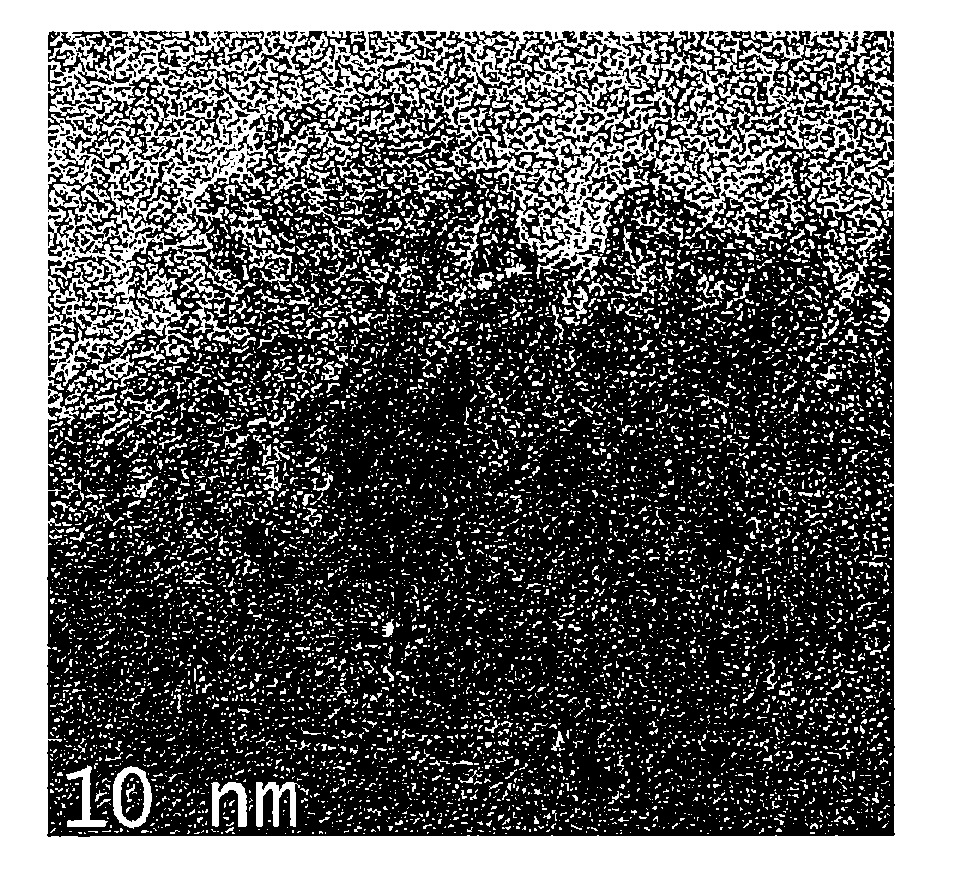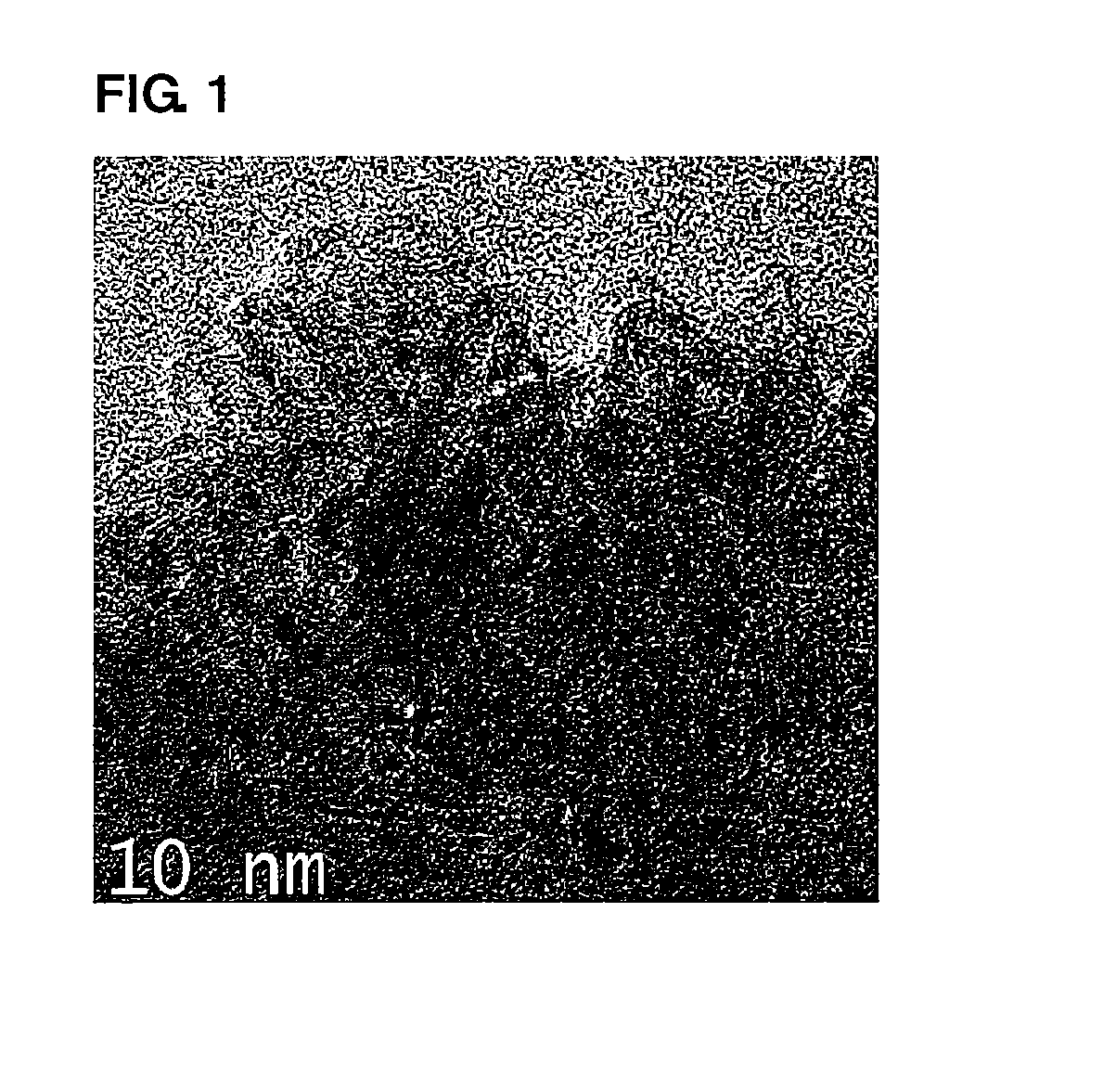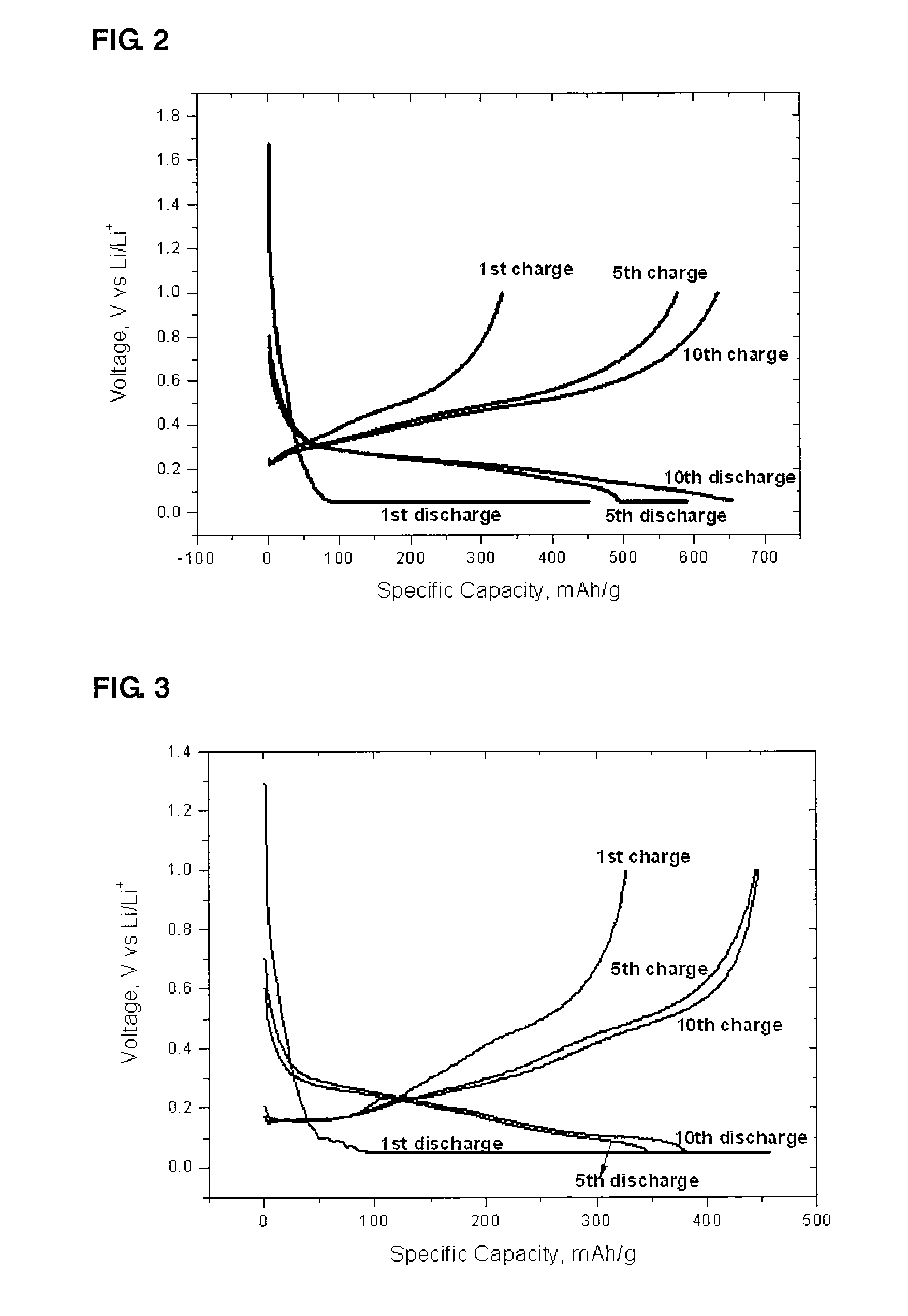Carbon nanotube-coated silicon/metal composite particle, preparation method thereof, and anode for secondary battery and secondary battery using the same
a carbon nanotube and composite particle technology, applied in the field of carbon nanotube-coated silicon/metal composite particle, can solve the problems of limiting the increase of the capacity of silicon, ., 200 to 350%, and achieve the effect of preventing large volumetric change and improving the electrical conductivity of silicon
- Summary
- Abstract
- Description
- Claims
- Application Information
AI Technical Summary
Benefits of technology
Problems solved by technology
Method used
Image
Examples
example 1
[0049]4.75 g of silicon particles in an average size of 1 μm and 0.25 g of copper particles in an average size of 3 μm were ball-milled at 400 rpm for 5 hours under an argon atmosphere, and alloyed in ethanol with wet milling. The alloyed particles were put into a crucible inside a tubular furnace, which was treated with heat at 700° C. for 10 hours under an atmosphere of a mixed gas consisting of 90% by weight of argon and 10% by weight of propylene, and then allowed to cool to room temperature. In order to prevent oxidation, the mixed gas containing 90% by weight of argon and 10% by weight of propylene was introduced at least one hour before the heating, so as to remove oxygen. The heat-treated particles were sifted through a 200 mesh sieve, to obtain uniform particles of carbon nanotube-coated silicon-copper alloy particles.
[0050]1.87 g of the prepared carbon nanotube-coated silicon-copper alloy particles as an anode active material, 0.187 g of carbon black as a conductive agent,...
example 2
[0052]1.5 g of the carbon nanotube-coated silicon / copper alloy particles prepared in Example 1 and 3.5 g of natural graphite as an anode active material, 0.25 g of carbon black as a conductive agent, and 8 g of 0.1 wt. % aqueous CMC solution and 0.25 g of 40 wt. % aqueous SBR solution as a binder were mixed to obtain a slurry. The viscosity of the slurry was adjusted to 1,000 centi-poise, at which the slurry was easily coated on a copper foil, and the slurry was then stirred with a mixer at 3000 rpm for 15 minutes. The slurry was then coated on 100 μm thick copper foil with the thickness of 10 μm with a doctor blade method, to produce an anode comprising a mixture of the carbon nanotube-coated silicon / copper composite particles and graphite. The anode was cut into a predetermined size (3×4 cm), and dried in a vacuum oven at 80° for 24 hours. A battery was assembled using the prepared anode in the manner as described in Example 1, and its charge and discharge characteristics, and cyc...
example 3
[0053]A electroless copper plating was carried out on silicon particles in an average size of 60 nm as follows: A plating solution comprises 4 g / l of copper sulfate as a metallic salt, 60 g / l of EDTA2Na as a chelating agent, 60 mg / l of NaCN as a stabilizer and 5% of NaOH as a pH adjusting agent. 40% formalin solution in an amount of 30 ml / l was used as a reducing agent. The plating was carried out at 30° C. 4.5 g of silicon particles in size of 60 nm were added to 450 ml of the plating solution, and uniformly dispersed for 20 minutes. NaOH solution was added to the uniformly dispersed plating solution, so as to maintain at pH 11. 10 ml of the formalin solution was then added so that 10% by weight of copper was plated on the surface of the nano-sized silicon particles. The resultant solution was filtrated, and the particles were washed with distilled water, to yield copper-plated silicon particles, which was then treated with heat in the manner as described in Example 1.
[0054]0.5 g o...
PUM
 Login to View More
Login to View More Abstract
Description
Claims
Application Information
 Login to View More
Login to View More - R&D
- Intellectual Property
- Life Sciences
- Materials
- Tech Scout
- Unparalleled Data Quality
- Higher Quality Content
- 60% Fewer Hallucinations
Browse by: Latest US Patents, China's latest patents, Technical Efficacy Thesaurus, Application Domain, Technology Topic, Popular Technical Reports.
© 2025 PatSnap. All rights reserved.Legal|Privacy policy|Modern Slavery Act Transparency Statement|Sitemap|About US| Contact US: help@patsnap.com



